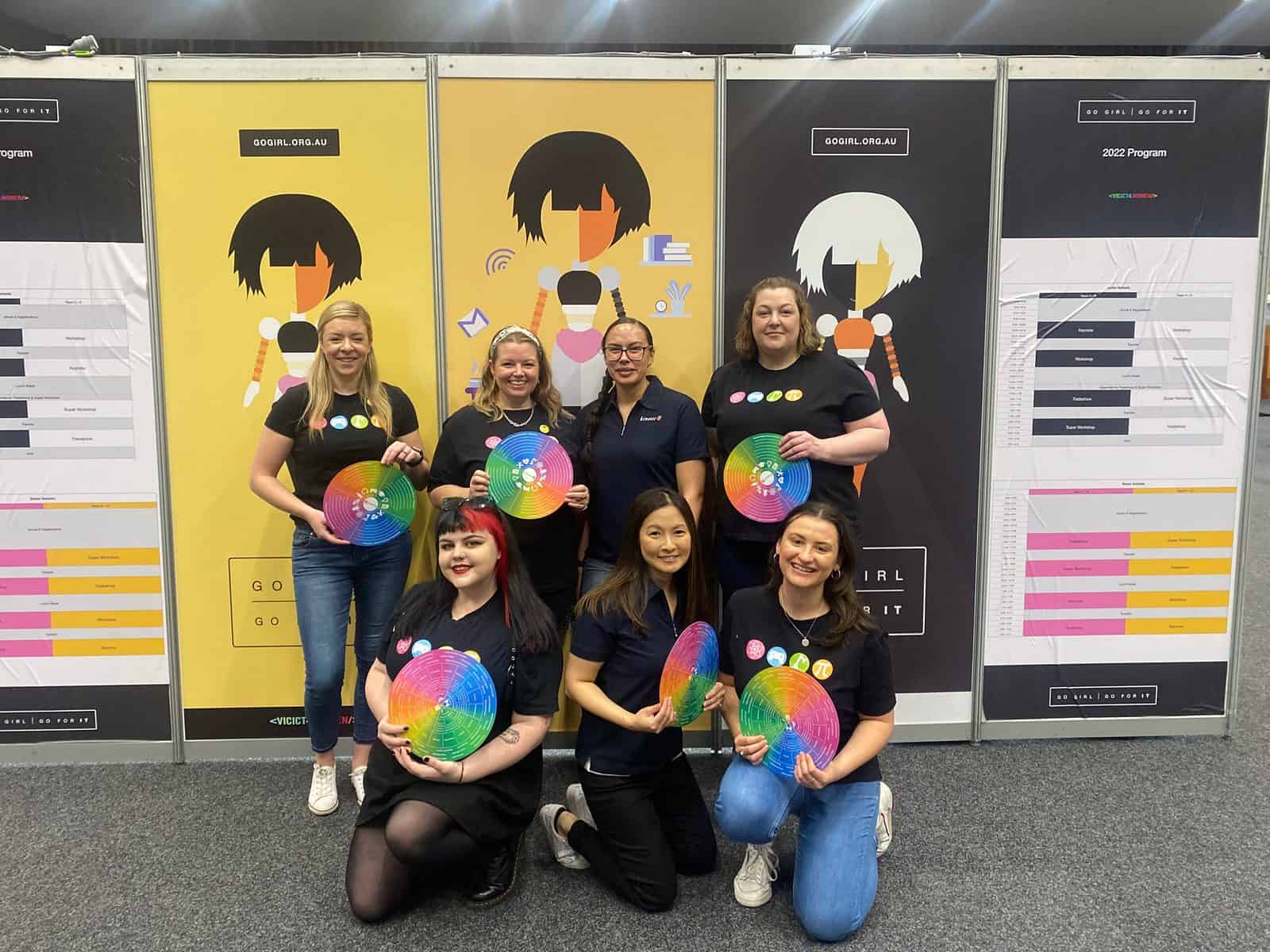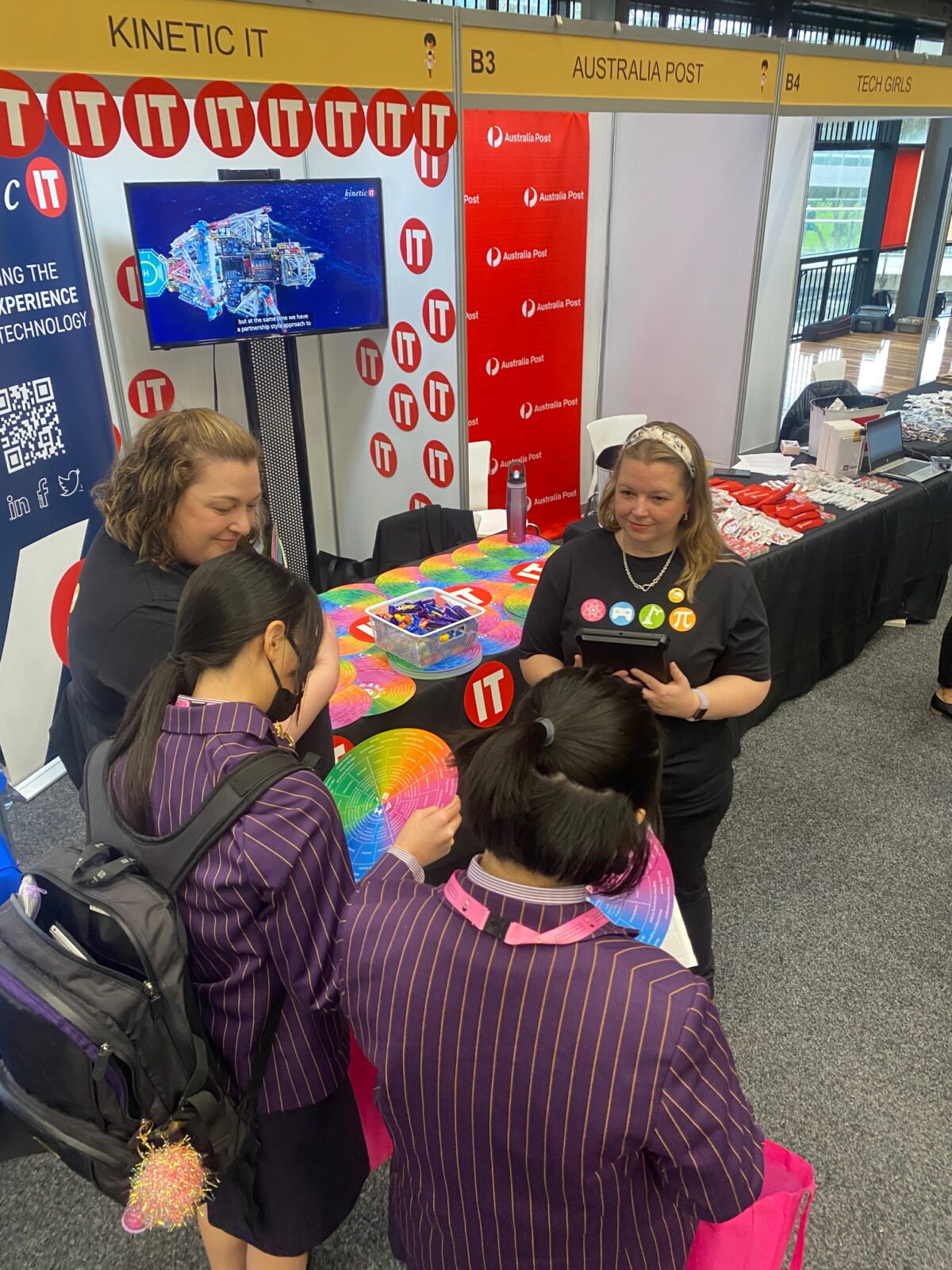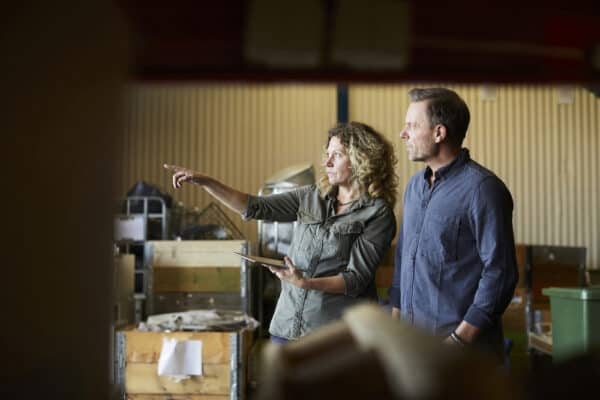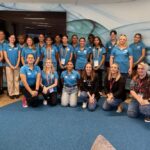Most businesses witness rapid change in their industries. They need to embrace radical transformation, push for innovation and encourage a culture of disruption, just to stay in the game. While we all feel the impact of this on our daily lives, the ones who will really experience this change are the future workers, consumers and contributors to the digital economy: Kids.
The proverbial “kids these days” are growing up in a world with unparalleled access to and reliance on technology. As consumers, their comprehension and technical dexterity are awe-inspiring. If you’ve ever seen a toddler unlock an iPhone and open their favourite app in seconds, you’ll understand what we mean. But how are they going to participate in the economy? Kinetic IT’s Senior Manager DEI & Participation, Jess Todd, looks at the future of STEM careers and how our Career Wheel helps kids understand their ICT career options.
STEM careers
Here are the facts: Three-quarters of future occupations will require STEM (Science, Technology, Engineering, Mathematics) skills and knowledge. However, the number of students taking up STEM-aligned subjects in high school isn’t sufficient to meet this demand. We know that kids are the future of the digital economy so if we’re going to have any hope of making a difference we need to focus on early intervention.
So how do you influence kids to consider their role in the digital revolution as a leader rather than a participant? In other words, how do you get more kids into STEM studies and careers?
How do you convince kids to get into STEM?
As an employer of over 1,100 people in the ICT sector, we’ve been to enough expos, school visits and incursions, and we’ve interacted with thousands of students through these channels. If there’s one thing we’ve accepted it’s that just asking kids “What do you want to be when you grow up” is as useful as a dial-up modem when you want to watch YouTube.
We started by asking these questions: When this generation makes it to the market what kind of roles will they see? What are the jobs that are going to shape the industry? Where is the growth and how do we make it sustainable? Technology will be so ubiquitous that after researching industries and cutting-edge technology, we established some emerging and predicted “mash-up” roles.
Armed with a list of exciting tech-based jobs of the future we set about how to spread the word that STEM will be incorporated into everything! But how? Catchy t-shirt slogan? Taylor Swift musical collaboration? We decided to engage with our target audience by talking about who was best placed to make this decision: the kids. We wanted to ask them some exploratory questions:
- What are you good at?
- What are you passionate about?
- What’s your favourite subject at school?
- What makes you unique?
- Where are you going in life?
Taking a page out of design thinking it all started to take shape one Saturday “crafternoon”. Armed with some A3 paper, pots, pans, and a fresh set of Faber-Castell connector pens – the Career Wheel was born.
RELATED CONTENT: The 10 most popular IT careers at the Go Girl tech conference
The genesis of the Career Wheel
The first step on the Career Wheel, and something every student can answer, is this: “What is your favourite subject at school?”
While a 13-year-old may not be able to tell you where they will be in 10 years’ time, they can definitely tell you what they like most about going to school, what makes them sit up, engage and participate. In short, their passion.
Secondly, we simply ask, why? What is it about this subject that makes you enjoy it? What is it about sitting in a science lab, kicking a football, making a dustpan out of metal scraps, or reading a Shakespearean novel that makes you feel happy? So, what’s their motivation?
Finally, we ask students to choose a word that best describes their personality, a word that represents how they see themselves and how they believe others see them. This final step of the Career Wheel is what we call self-reflection.
And it’s as simple as that – a guided tour through passion, motivation and self-reflection that opens up a world of possibilities in under a minute.
RELATED CONTENT: Want a career in cyber security? Experts share 7 useful tips
Opening up a world of opportunity with the Career Wheel
Supported by career descriptions, the Career Wheel shows students there is more to choosing careers than they thought, and often sparks a new way of thinking about their future.
The Career Wheel helps kids understand they possess a mix of interests, talents and motivators they may not have thought of. They realise that subconsciously they’ve already got a pretty good idea of what “grown-up me” might look like, even at a young age. They may also realise that the things experienced in school are actually the building blocks of meaningful pursuits, not just “the stuff you’re told to do.” Pretty heavy for teens!
The Career Wheel made its debut in August 2016, and since then we’ve interacted with nearly three thousand students and handed out two thousand Career Wheels in four states. We hear that the conversation is making its way back to classrooms, amongst peers and families. While it’s hard to measure if the Career Wheel will actually result in students converting to STEM careers, the initial reaction to the Career Wheel has been overwhelmingly positive. We even received feedback that some students took their bus driver through it in case he ever wanted to pursue his passion for the outdoors and design and mix it up with technology to become an Industrial Designer. We hope he does.
So what about STEM?
Since rolling out the Career Wheel we’ve learned some things about STEM. We’ve learned about some of the incredible programs schools are running to give kids exposure to STEM at an early age, and this early encouragement is critical. We learned that girls seemed to gravitate toward roles that are people focussed or with a humanitarian angle. Boys had a tendency to choose paths that ended up in hands-on, methodical roles with a distinct engineering flavour.
But we also learned that both girls and boys got excited about roles that would enable them to be creative which told us that kids just want to express themselves… Preferably with robots.
Finally, it highlighted for us that students are more open than we anticipated to embrace a future where jobs are done by robots and machines exceed our own decision-making capabilities. They aren’t scared at all and why should they be? It will be a world of their making.
RELATED CONTENT: Inspiring experience at Kinetic IT for students supported by The Smith Family
Backing young people
The shift to the digital economy requires a re-think of what IT roles are. It’s no longer about square pegs in round holes, but an entirely new set of shapes. As leaders in this industry, it’s our role to foster the conditions for growth and disruption. Whether it’s simply having a conversation with the young people in our lives or being a key player in building the knowledge and innovation economy, we have a responsibility to encourage, inspire and eventually make room for the next generation. And hopefully, one of them will be there because they took part in the Kinetic IT Career Wheel.
In 2017 Kinetic IT intends to take the Career Wheel to all of our WA Techtrails incursions with WiTWA, the Northern Territory Skills Expo, and other regional events we have the opportunity to attend. In addition, this year we hope to create a digital version of the Career Wheel to make it more accessible, more interactive and way more ‘cool’.
Head to our website to find more insights and information about the Kinetic IT Career Wheel and our other initiatives to encourage future generations in STEM.




















